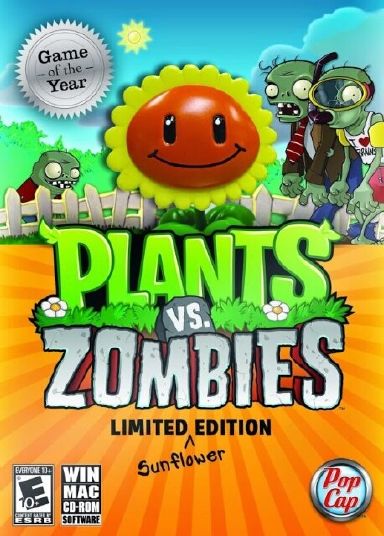NLP vs NLU vs. NLG: the differences between three natural language processing concepts
It can be used to help customers better understand the products and services that they’re interested in, or it can be used to help businesses better understand their customers’ needs. Simplilearn’s AI ML Certification is designed after our intensive Bootcamp learning model, so you’ll be ready to apply these skills as soon as you finish the course. You’ll learn how to create state-of-the-art algorithms that can predict future data trends, improve business decisions, or even help save lives.
What’s more, a great deal of computational power is needed to process the data, while large volumes of data are required to both train and maintain a model. Grammar complexity and verb irregularity are just a few of the challenges that learners encounter. Now, consider that this task is even more difficult for machines, which cannot understand human language in its natural form.
That means there are no set keywords at set positions when providing an input. Just like learning to read where you first learn the alphabet, then sounds, and eventually words, the transcription of speech has evolved over time with technology. You can foun additiona information about ai customer service and artificial intelligence and NLP. NLU is an algorithm that is trained to categorize information ‘inputs’ according to ‘semantic data classes’. The model finalized using neural networks is capable of determining whether X belongs to class Y, class Z, or any other class. Imagine you had a tool that could read and interpret content, find its strengths and its flaws, and then write blog posts that meet the needs of both search engines and your users. More importantly, for content marketers, it’s allowing teams to scale by automating certain kinds of content creation and analyze existing content to improve what you’re offering and better match user intent.
Best Use Cases of Natural Language Processing (NLP)
Without using NLU tools in your business, you’re limiting the customer experience you can provide. NLP and NLU are important words to use when designing a machine that can readily interpret human language, regardless of if it has any defects. Conversational interfaces are powered primarily by natural language processing (NLP), and a key subset of NLP is natural language understanding (NLU). The terms NLP and NLU are often used interchangeably, but they have slightly different meanings. Developers need to understand the difference between natural language processing and natural language understanding so they can build successful conversational applications. Ultimately, we can say that natural language understanding works by employing algorithms and machine learning models to analyze, interpret, and understand human language through entity and intent recognition.
It works by converting unstructured data albeit human language into structured data format by identifying word patterns, using methods like tokenization, stemming, and lemmatization which examine the root form of the word. Natural Language Processing, a fascinating subfield of computer science and artificial intelligence, enables computers to understand and interpret human language as effortlessly as you decipher the words in this sentence. The future of NLU and NLP is promising, with advancements in AI and machine learning techniques enabling more accurate and sophisticated language understanding and processing.
And so, understanding NLU is the second step toward enhancing the accuracy and efficiency of your speech recognition and language translation systems. The collaboration between Natural Language Processing (NLP) and Natural Language Understanding (NLU) is a powerful force in the realm of language processing and artificial intelligence. By working together, NLP and NLU enhance each other’s capabilities, leading to more advanced and comprehensive language-based solutions.
It’s taking the slangy, figurative way we talk every day and understanding what we truly mean. Semantically, it looks for the true meaning behind the words by comparing them to similar examples. At the same time, it breaks down text into parts of speech, sentence structure, and morphemes (the smallest understandable part of a word). Natural language processing starts with a library, a pre-programmed set of algorithms that plug into a system using an API, or application programming interface. Basically, the library gives a computer or system a set of rules and definitions for natural language as a foundation.
It is mainly used to build chatbots that can work through voice and text and potentially replace human workers to handle customers independently. NLP algorithms are used to understand the meaning of a user’s text in a machine, while NLU algorithms take actions and core decisions. A third algorithm called NLG (Natural Language Generation) generates output text for users based on structured data. For businesses, it’s important to know the sentiment of their users and customers overall, and the sentiment attached to specific themes, such as areas of customer service or specific product features.
NLP and NLU: Redefining Business Communication and Customer Experience – BNN Breaking
NLP and NLU: Redefining Business Communication and Customer Experience.
Posted: Fri, 16 Feb 2024 17:21:50 GMT [source]
Machine learning uses computational methods to train models on data and adjust (and ideally, improve) its methods as more data is processed. According to various industry estimates only about 20% of data collected is structured data. The remaining 80% is unstructured data—the majority of which is unstructured text data that’s unusable for traditional methods. Just think of all the online text you consume daily, social media, news, research, product websites, and more. Ecommerce websites rely heavily on sentiment analysis of the reviews and feedback from the users—was a review positive, negative, or neutral? Here, they need to know what was said and they also need to understand what was meant.
Instead, its prime objective is to bring out the actual intent of the speaker by analysing the different possible contexts of every sentence. In the first sentence, the ‘How’ is important, and the conversational AI understands that, letting the digital advisor respond correctly. In the second example, ‘How’ has little to no value and it understands that the user’s need to make changes to their account is the essence of the question. Expertly understanding language depends on the ability to distinguish the importance of different keywords in different sentences. It then automatically proceeds with presenting the customer with three distinct options, which will continue the natural flow of the conversation, as opposed to overwhelming the limited internal logic of a chatbot. How much can it actually understand what a difficult user says, and what can be done to keep the conversation going?
Key Components Of NLP
If accuracy is paramount, go only for specific tasks that need shallow analysis. If accuracy is less important, or if you have access to people who can help where necessary, deepening the analysis or a broader field may work. In general, when accuracy is important, stay away from cases that require deep analysis of varied language—this is an area still under development in the field of AI. The application of NLU and NLP in chatbots as business solutions are the fruit of the digital transformation brought about by the fourth industrial revolution. The main difference between them is that NLP deals with language structure, while NLU deals with the meaning of language. It also helps in eliminating any ambiguity or confusion from the conversation.
In recent times, the popularity of artificial intelligence (AI) has led to the emergence of new concepts. Questionnaires about people’s habits and health problems are insightful while making diagnoses. Read on to understand what NLP is and how it is making a difference in conversational space. Natural language includes slang and idioms, not in formal writing but common in everyday conversation.
Simply put, NLP (Natural Language Processing) is a branch of Artificial Intelligence that uses machine learning algorithms to understand and respond in human-like language. People can express the same idea in different ways, but sometimes they make mistakes when speaking or writing. They could use the wrong words, write sentences that don’t make sense, or misspell or mispronounce words. Together, NLU and natural language generation enable NLP to function effectively, providing a comprehensive language processing solution. NLU focuses on understanding human language, while NLP covers the interaction between machines and natural language.
Consider leveraging our Node.js development services to optimize its performance and scalability. In this context, another term which is often used as a synonym is Natural Language Understanding (NLU).
NLP is a field of artificial intelligence (AI) that focuses on the interaction between human language and machines. NLU is a subset of NLP that focuses on understanding the meaning of natural language input. NLU systems use a combination of machine learning and natural language processing techniques to analyze text and speech and extract meaning from it. In this case, NLU can help the machine understand the contents of these posts, create customer service tickets, and route these tickets to the relevant departments. This intelligent robotic assistant can also learn from past customer conversations and use this information to improve future responses.
This technology brings us closer to a future where machines can truly understand and interact with us on a deeper level. By combining linguistic rules, statistical models, and machine learning techniques, NLP enables machines to process, understand, and generate human language. On the other hand, NLU delves deeper into the semantic understanding and contextual interpretation of language.
Once the language has been broken down, it’s time for the program to understand, find meaning, and even perform sentiment analysis. Natural language understanding interprets the meaning that the user communicates and classifies it into proper intents. For example, it is relatively easy for humans who speak the same language to nlu and nlp understand each other, although mispronunciations, choice of vocabulary or phrasings may complicate this. NLU is responsible for this task of distinguishing what is meant by applying a range of processes such as text categorization, content analysis and sentiment analysis, which enables the machine to handle different inputs.
From 1960 onwards, numerical methods were introduced, and they were to effectively improve the recognition of individual components of speech, such as when you are asked to say 1, 2 or 3 over the phone. However, it will take much longer to tackle ‘continuous’ speech, which will remain rather complex for a long time (Haton et al., 2006). NLP and NLU will analyze content on the stock market and break it down, while NLG will take the applicable data and turn it into a templated story for your site.
Understanding NLP vs NLU vs NLG
Natural Language Processing is the process of analysing and understanding the human language. It’s a subset of artificial intelligence and has many applications, such as speech recognition, translation and sentiment analysis. Natural language processing is a subset of AI, and it involves programming computers to process massive volumes of language data. It involves numerous tasks that break down natural language into smaller elements in order to understand the relationships between those elements and how they work together. Common tasks include parsing, speech recognition, part-of-speech tagging, and information extraction.
The first step in natural language understanding is to determine the intent of what the user is saying. Upon successful determination of this, it can be used to filter out any irrelevant data for further processing. Instead, they want an answer as quickly as possible to make plans accordingly. Sometimes people know what they are looking for but do not know the exact name of the good. In such cases, salespeople in the physical stores used to solve our problem and recommended us a suitable product.
- While natural language processing (NLP), natural language understanding (NLU), and natural language generation (NLG) are all related topics, they are distinct ones.
- Knowledge-Enhanced biomedical language models have proven to be more effective at knowledge-intensive BioNLP tasks than generic LLMs.
- Most of the time financial consultants try to understand what customers were looking for since customers do not use the technical lingo of investment.
- NLP full form is Natural Language Processing (NLP) is an exciting field that focuses on enabling computers to understand and interact with human language.
- The terms NLP and NLU are often used interchangeably, but they have slightly different meanings.
- As solutions are dedicated to improving products and services, they are used with only that goal in mind.
NLG is used to generate a semantic understanding of the original document and create a summary through text abstraction or text extraction. In text extraction, pieces of text are extracted from the original document and put together into a shorter version while maintaining the same information content. Text abstraction, the original document is phrased in a linguistic way, text interpreted and described using new concepts, but the same information content is maintained. Natural Language Understanding(NLU) is an area of artificial intelligence to process input data provided by the user in natural language say text data or speech data. It is a way that enables interaction between a computer and a human in a way like humans do using natural languages like English, French, Hindi etc.
NLU, a subset of AI, is an umbrella term that covers NLP and natural language generation (NLG). By understanding human language, NLU enables machines to provide personalized and context-aware responses in chatbots and virtual assistants. It plays a crucial role in information retrieval systems, allowing machines to accurately retrieve relevant information based on user queries. Where NLU focuses on transforming complex human languages into machine-understandable information, NLG, another subset of NLP, involves interpreting complex machine-readable data in natural human-like language. This typically involves a six-stage process flow that includes content analysis, data interpretation, information structuring, sentence aggregation, grammatical structuring, and language presentation. NLG is another subcategory of NLP that constructs sentences based on a given semantic.
Sentence Completion
NLP systems extract subject-verb-object relationships and noun phrases using parsing and grammatical analysis. “I love eating ice cream” would be tokenized into [“I”, “love”, “eating”, “ice”, “cream”]. 2 min read – With rapid technological changes such as cloud computing and AI, learn how to thrive in the foundation model era. NLG also encompasses text summarization capabilities that generate summaries from in-put documents while maintaining the integrity of the information. Extractive summarization is the AI innovation powering Key Point Analysis used in That’s Debatable. Using symbolic AI, everything is visible, understandable and explained within a transparent box that delivers complete insight into how the logic was derived.
This will empower your journey with confidence that you are using both terms in the correct context. But it can actually free up editorial professionals by taking on the rote tasks of content creation and allowing them to create the valuable, in-depth content for which your visitors are searching. It takes your question and breaks it down into understandable pieces – “stock market” and “today” being keywords on which it focuses. In fact, chatbots have become so advanced; you may not even know you’re talking to a machine. These terms are often confused because they’re all part of the singular process of reproducing human communication in computers.
- NLU is responsible for this task of distinguishing what is meant by applying a range of processes such as text categorization, content analysis and sentiment analysis, which enables the machine to handle different inputs.
- NLU can digest a text, translate it into computer language and produce an output in a language that humans can understand.
- In this blog post, we will explore the differences between NLP, NLU, and NLG, and how they are used in real-world applications.
- You’re the one creating content for Bloomberg, or CNN Money, or even a brokerage firm.
- Consider a scenario in which a group of interns is methodically processing a large volume of sensitive documents within an insurance business, law firm, or hospital.
Improvements in computing and machine learning have increased the power and capabilities of NLU over the past decade. We can expect over the next few years for NLU to become even more powerful and more integrated into software. Natural language understanding is complicated, and seems like magic, because natural language is complicated. A clear example of this is the sentence “the trophy would not fit in the brown suitcase because it was too big.” You probably understood immediately what was too big, but this is really difficult for a computer.
NLP models evaluate the text, extract key information, and create a summary. Natural Language Processing (NLP) relies on semantic analysis to decipher text. NER systems scan input text and detect named entity words and phrases using various algorithms.
It can identify that a customer is making a request for a weather forecast, but the location (i.e. entity) is misspelled in this example. By using spell correction on the sentence, and approaching entity extraction with machine learning, it’s still able to understand the request and provide correct service. Spelling mistakes and typos are a natural part of interacting with a customer. Our conversational AI platform uses machine learning and spell correction to easily interpret misspelled messages from customers, even if their language is remarkably sub-par.
If you produce templated content regularly, say a story based on the Labor Department’s quarterly jobs report, you can use NLG to analyze the data and write a basic narrative based on the numbers. It takes data from a search result, for example, and turns it into understandable language. Once a chatbot, smart device, or search function understands the language it’s “hearing,” it has to talk back to you in a way that you, in turn, will understand.
You’ll probably use Alexa or Siri to make the process smoother and save time. A good starting point for building a comprehensive search experience is a straightforward app template. Behind the scenes, sophisticated algorithms like hidden Markov chains, recurrent neural networks, n-grams, decision trees, naive bayes, etc. work in harmony to make it all possible. As we embrace this future, responsible development and collaboration among academia, industry, and regulators are crucial for shaping the ethical and transparent use of language-based AI. Reach out to us now and let’s discuss how we can drive your business forward with cutting-edge technology.
These models learn patterns and associations between words and their meanings, enabling accurate understanding and interpretation of human language. NLU is the final step in NLP that involves a machine learning process to create an automated system capable of interpreting human input. This requires creating a model that has been trained on labelled training data, including what is being said, who said it and when they said it (the context). When it comes to natural language, what was written or spoken may not be what was meant. In the most basic terms, NLP looks at what was said, and NLU looks at what was meant. People can say identical things in numerous ways, and they may make mistakes when writing or speaking.
Real-world examples of NLU include small tasks like issuing short commands based on text comprehension to some small degree like redirecting an email to the right receiver based on basic syntax and decently sized lexicon. Together they are shaping the future of human-computer interaction and communication. It’s important to be updated regarding these changes and innovations in the world so you can use these natural language capabilities to their fullest potential for your business success. The machine can understand the grammar and structure of sentences and text through this.
NLU focuses on understanding the meaning and intent of human language, while NLP encompasses a broader range of language processing tasks, including translation, summarization, and text generation. NLP models help chatbots understand user input and respond conversationally. The models examine context, previous messages, and user intent to provide logical, contextually relevant replies. NLU is also utilized in sentiment analysis to gauge customer opinions, feedback, and emotions from text data.
Voice assistants and virtual assistants have several common features, such as the ability to set reminders, play music, and provide news and weather updates. They also offer personalized recommendations based on user behavior and preferences, making them an essential part of the modern home and workplace. As NLU technology continues to advance, voice assistants and virtual assistants are likely to become even more capable and integrated into our daily lives. Primarily focused on machine reading comprehension, NLU gets the chatbot to comprehend what a body of text means. NLU is nothing but an understanding of the text given and classifying it into proper intents.








Tinggalkan Balasan